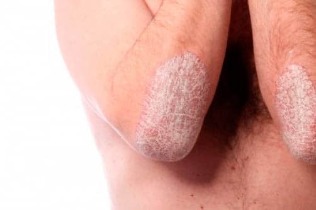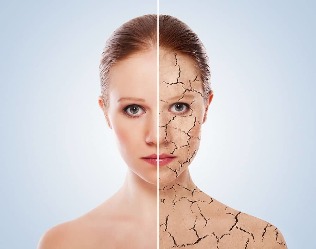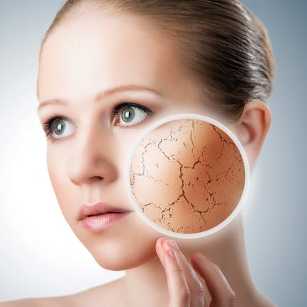
Despite the fact that psoriasis is a common and well-known disease, it is still not fully understood. And patients usually do not know at all that psoriasis is not a bacterial infection or a fungus, but a non-standard reaction of the immune system, caused by unknown reasons. Information on the causes and symptoms of psoriasis will be very helpful to patients as it will help them overcome the disease.
What is this disease?
Squamous lichen is another name for psoriasis and this name perfectly describes this disease. Psoriasis is manifested by the formation of inflamed plaques of various sizes on the skin, which are densely covered with thick skin scales.
Surely almost everyone has heard of such a disease as psoriasis. And that is not surprising, because scaly lichen is quite widespread. This disease is diagnosed in 4-10% of the world's population. Moreover, statisticians who collect information on the prevalence of psoriasis claim that the number of patients is constantly growing.
Scalp lichens have been known to humans since ancient times, and even healers in ancient Greece tried to treat this disease. The modern history of studying psoriasis is about 150 years old. But during this rather significant period of time, researchers have managed to learn insufficiently about the causes and treatment of psoriasis.Wide prevalence, uncertainty of etiology (causes), insufficiently effective treatment - all this characterizes psoriasis as one of the most difficult dermatological problems.
Today, dermatologists consider psoriasis a complex systemic disease associated with disorders in the immune system, with the malfunction of metabolic processes and the appearance of trophic disorders. These failures result in specific changes in the skin.
Therefore, answering the question what psoriasis is, a modern dermatologist will answer that it is a disorder of trophism and metabolic processes in the skin caused by a malfunction of the body's systems. Today, two theories about the etiology of psoriasis are considered the most plausible: genetic and viral.
- Genetic theory has many supporters, because psoriasis often acts as a hereditary or familial dermatosis. Careful study of the patient's family history in 60-80% confirms the presence of psoriasis in one form or another in the patient's relatives. However, in some patients it is not possible to confirm the fact of hereditary origin of psoriasis. This circumstance is the reason for separating these cases into a special group, in which the main reason is not genetic, but phenotypic defects.
- The virus theory, according to which psoriasis develops as a result of infection, has its supporters. Confirmation of information about the viral origin of psoriasis is the detection of antibodies in the blood of patients, as well as "elemental bodies" in the cells of the epidermis. According to this theory, psoriasis develops not only when it is infected with the virus, but also under certain conditions.
There are other theories that explain psoriasis. For example, endocrine, neurogenic, metabolic, etc. Naturally, all these theories are not baseless, and studying them allows you to get more important information about psoriasis. However, today it is already known that the condition of the endocrine and nervous system, as well as the work of the digestive tract, do not cause psoriasis, but have a significant impact on the course of this disease.
For example, pathologies affecting the liver lead to the fact that the quality of blood purification performed by this organ is significantly reduced. This, in turn, can cause a variety of skin conditions, including psoriasis.

Pathologies that affect the liver (hepatitis, primary cirrhosis, etc. ), lead to the fact that the tissues of this organ are reborn, ie the liver is gradually replaced by connective tissue. As a result, the liver stops coping with its cleansing functions. Externally, this is manifested by yellowing of the mucous membranes and skin, and the development of skin diseases, including psoriasis, is possible.
There is also an inverse relationship, psoriasis is often accompanied by fatty degeneration that affects the liver. Therefore, in the treatment of this skin disease, it is important to follow a diet so as not to burden the liver unnecessarily. Patients are advised to limit fatty foods, completely eliminate alcohol.
Therefore, despite numerous studies, it has not been possible to obtain an accurate answer to the question of what psoriasis is. However, the work continues, so there is a chance that the mystery of this mysterious disease will be solved, and we will learn a lot about the skin disease psoriasis.
International Classification
Psoriasis manifests itself in various forms. To make navigation easier for professionals, the generally accepted classification of psoriasis is used.
He added psoriasis to the International Classification of Diseases (ICD). To date, 10 revisions of the International Register of Diseases are already in use, therefore the abbreviation ICD 10 is used. The work began on 10 revisions of the International Classification of Diseases in 1983, and was completed in 1987.
Basically, ICD 10 is a standard assessment tool used in medicine and health administration. The revision manual 10 is used to monitor the prevalence of various diseases and other health problems.
Using version 10 of the ICD, it is possible to compare data on morbidity and mortality in different countries, which allows obtaining statistics and systematizing diagnostic data. By agreement of WHO members, ICD 10 is used to assign codes to various diseases. In the 10th version of the classifier, alphanumeric codes are adopted with the help of which it is convenient to store information in electronic form.
All types of psoriasis are included in ICD 10 and each is assigned a specific code. In dermatology, the following forms and types of psoriasis are distinguished:
- Common psoriasis(synonyms: vulgar, simple, plaque-like). The disease was assigned a code according to ICD 10 - L-40. 0. This is the most common form, observed in 80-90% of patients. The main symptoms are the formation of plaques raised above the surface of the unaltered skin, covered with white-gray scales of the skin. This shape is characterized by a slight flaking of the scales. After their removal, inflamed red skin opens which is very easily injured and begins to bleed. As the inflammatory process progresses, plaques can increase in size significantly.
- Inverse psoriasis. It is a disease that affects the folds of the skin (flexor surfaces). For this form of the disease in ICD 10 it was adopted at L83-4. Dermatosis occurs with the formation of wrinkles on the skin on smooth or minimally scaly spots. Worsening is noticed when the skin is injured by friction. The disease is often complicated by an associated streptococcal infection or fungus.
- Guttate psoriasis. This form of psoriasis is characterized by the formation on the skin of a large number of small spots of red or purple, in the form of water droplets. According to version 10 of the international classifier, such a disease received the L4 code. Guttate psoriasis most commonly affects the skin of the feet, but the rash can also occur on other parts of the body. At the same time, tear psoriasis is known to develop as a complication after streptococcal infections - pharyngitis, tonsillitis, etc.
- Pustular or exudative psoriasisis a severe cutaneous form, according to ICD 10 it has been assigned the codes L1-3 and L 40. 82. It is characterized by the formation of blisters or pustules. The skin on the lesions is edematous, red, inflamed, and easily peels. If a fungus or bacteria penetrates the pustules, the contents of the pustules become purulent. Pustular psoriasis often affects the distal extremities, but in the most severe cases a generalized process can develop with the spread of the rash throughout the body.
- Arthritis psoriatic or arthropathic psoriasis. According to version 10 of ICD pathology, it was assigned to L5. It is manifested by inflammation of the joints. Arthropathic psoriasis can affect all types of joints, but in most cases the joints in the phalanges of the toes and hands become inflamed. These can be affected knee, hip or shoulder joints. The lesions can be so severe that they will lead to the patient's disability. Therefore, you should not think of psoriasis as an exclusively skin disease. Severe types of psoriasis can lead to systemic damage, disability or even death.
- Erythrodermic psoriasis. A rare but severe type of psoriasis, according to ICD 10, this disease has been given the code L85. Erythrodermic psoriasis often manifests itself generalized, the whole or almost the entire surface of the skin can enter the affected area. The disease is accompanied by severe itching, swelling, pain.
- Onychodystrophy psoriatic or nail psoriasis. According to version 10 of the ICD, the disease was given the code L86. The pathology is manifested by changes in the appearance of the nails on the toes and hands. Nails can change color, become thicker and begin to decay. Complete nail loss is possible.

In psoriasis, the classification of the disease takes into account not only the type of disease, but also the severity of symptoms:
- localized psoriasis is a disease in which less than 20% of the skin is affected;
- widespread psoriasis affects more than 20% of the body surface;
- if almost the entire skin surface is affected, we are talking about universal psoriasis.
If we consider all types of diseases, then frequent psoriasis is more common than other forms.
Flow phases
Limited or widespread psoriasis goes through three stages: progressive, stable, and regressive.
The following is characteristic of progressive psoriasis:
- appearance of new rashes;
- growth of pre-existing plaques;
- appearance of new elements of the rash at the site of skin injuries (scratches, scratches);
- abundant scaling of existing deposits.
The following symptoms are characteristic of the stationary stage of psoriasis:
- no new items appear;
- moderate peeling of elements;
- shows no signs of element growth.

The appearance of folds in the stratum corneum around the elements is a sign of the transition from stationary to regressive phase.
The regression phase is characterized by the following types of symptoms:
- decrease in peeling intensity;
- element resolution.
After removing psoriatic plaques, hypo- or hyperpigmented spots remain in place.
Scaly lichen is characterized by a long course with periodic exacerbations. The following types of psoriasis are distinguished:
- winter (worsens in autumn and winter);
- summer (with deterioration during the warm period);
- off-season psoriasis is the most severe type because there is no clear link between relapses and seasons, periods of remission may be virtually absent.
Diagnostic Features
If psoriasis has a typical clinical picture, the diagnosis will not be so difficult. However, this disease is often masked in other pathologies.
For example, nail psoriasis is often replaced by nail fungus, because the external manifestations in the early stages of these diseases are very similar. However, nail fungus and psoriasis are completely different in nature, so the treatment should be different.
A layman can replace psoriasis and fungus with fungus. Because mycoses of the skin (skin fungi) manifest similar symptoms - the formation of scaly plaques. Therefore, once you have noticed suspicious symptoms on the body or nails, you do not need to diagnose yourself and read the treatment of fungus with pharmaceutical or folk remedies.
If the diagnosis is wrong, and in fact the cause of the symptoms is not a fungus, but psoriasis, then the treatment will not be useful, but will, on the contrary, worsen the symptoms.
When you consult a dermatologist, a fungal test will be done and the scraping will be taken from the nail or skin. The resulting material is then placed in nutrient media. If the fungus is present in the material, a large colony will grow in the test sample after a few days. From the appearance of the material, it will be possible to understand which type of fungus caused the infection.Sometimes psoriasis is complicated by the addition of secondary infections, it can be a bacterial infection or a fungus. Therefore, when the clinical picture changes (appearance of purulent discharge, discoloration of deposits, etc. ) , patients will need to be periodically tested for fungi and other infectious agents.
, patients will need to be periodically tested for fungi and other infectious agents.
In the diagnostic process, a certain role is assigned to a set of phenomena called the psoriatic triad. Appearances occur consecutively, when the element of the rash is scraped.
The psoriatic triad looks like this:
- when scraping the rash element, the scale is removed in the form of "sawdust";
- After removing the chips, a thin transparent film similar to polyethylene opens;
- when the film is damaged, the correct bleeding opens.
A dermatologist diagnoses psoriasis, but if necessary, the doctor can refer the patient to other specialists - rheumatologists, gastroenterologists, surgeons, etc.
Interesting facts about psoriasis
People have known about psoriasis for a long time. Even the very name of the disease entered our language from ancient Greek. At the time of the flourishing of ancient Hellas, the word "psora" meant all skin diseases manifested by peeling and itching.
The first person to write a detailed discussion of psoriasis was a Roman named Cornelius Celz. In the fifth volume of his work "De medicina" there is an extensive chapter on this disease.
They knew about psoriasis, but this disease was not assessed unambiguously, as they called it, sometimes "imperial", sometimes "devilish" disease.
Of course, the ancient healers knew very little about psoriasis. Until the 19th century, this disease was often confused with other skin diseases. Psoriasis was first identified as an independent nosological form in 1799. This was done by the English dermatologist Robert Villan, who singled out psoriasis from an extensive group of skin diseases, which is manifested by itching and dandruff.
Psoriasis was known first hand not only by ordinary people, but also by prominent political figures. For example, Winston Churchill, who suffered from this disease, promised to erect a monument of pure gold to a person who can learn all about psoriasis and offer effective treatment for this disease.
Modern understanding of disease
It must be said that modern science does not know much about this mysterious disease. There are various theories about the origin as well as the course and treatment of psoriasis.
Here are some facts about psoriasis that are undeniable:
- , although the causes of the disease are unclear, it was possible to find out about the nature of psoriasis. This disease is autoimmune, ie it is caused by a malfunction of the immune system;
- Another established fact about psoriasis: the disease can be inherited. However, this is not always the case, even if both parents are ill, their child’s risk of developing the disease is 65%. At the same time, some patients develop psoriasis, even though none of his relatives have the disease;
- An interesting fact about psoriasis is that this disease is characterized by the Kebner phenomenon. This phenomenon is manifested in the fact that the elements of the rash are formed at the sites of skin lesions - scratches, burns, frostbite. Sometimes psoriasis appears after a while, at the site of the scars;
- An important observation that allows you to get more information about psoriasis is the relationship of this disease with climatic factors. Exacerbations and relapses are often timed with the change of season; In practice,
- patients have probably noticed a link between worsening and stress. All patients should know for sure that the disease recurs or worsens in the background of nervous tension and experiences;
- A new fact about psoriasis is that the disease can debut at any age, although it was previously believed that scaly lichen occurs after 30 years;
- It is important that all people know that psoriasis is not a contagious disease. Even with close contact with the patient, there is no risk of infection;
- Almost everyone has heard of the incurability of psoriasis, and this is true because no drug has been found that could surely defeat the disease. But patients should be aware that psoriasis can be controlled. Adequate and timely treatment enables long-term remission.
Modern methods of treatment
Speaking of the common psoriasis disease, we can’t help but talk about treating this common disease. It must be said that psoriasis cannot be cured by tablets or ointments alone.
In order to forget about the manifestations of psoriasis for a long time, the patient will, in close cooperation with the doctor, have to make an effort. It will be necessary to organize the food properly. Some experts claim that you can forget about psoriasis forever only with the help of a properly composed diet and regular cleansing of the body.
The doctor will compile a preliminary treatment plan. As a rule, methods of external (ointments, creams) and systemic (tablets, injections) therapy are used. In addition, physiotherapeutic methods will be used, and treatment in resorts is recommended. It is recommended to treat psoriasis with medicinal mud, mineral and thermal water.
Resorts can also offer non-traditional methods of treatment. For example, with the help of fish that live in thermal springs. These little healers effectively remove dead skin flakes and disinfect the skin, promoting its fastest healing.
May offer other scaly lichen treatments at resorts. For example, leech therapy, medicinal baths and applications, sun therapy, etc.
You will need to be prepared for the fact that your treatment regimen will change from time to time. Because not all methods are appropriate for a particular patient. If the selected treatments fail, they will have to be replaced.
Popular treatments for psoriasis are also widely advertised. Indeed, some of them can help achieve remission. However, when choosing a method, you need to remember common sense so as not to harm your health. If there is any doubt about the recipe or recommendation, then it is better not to use them. Consult a doctor before using any method of treatment.
It should be understood that psoriasis can be forgotten forever only if the patient and his immediate environment are in a positive mood. Only faith in success and an optimistic attitude will help to overcome this mysterious and insidious disease.























